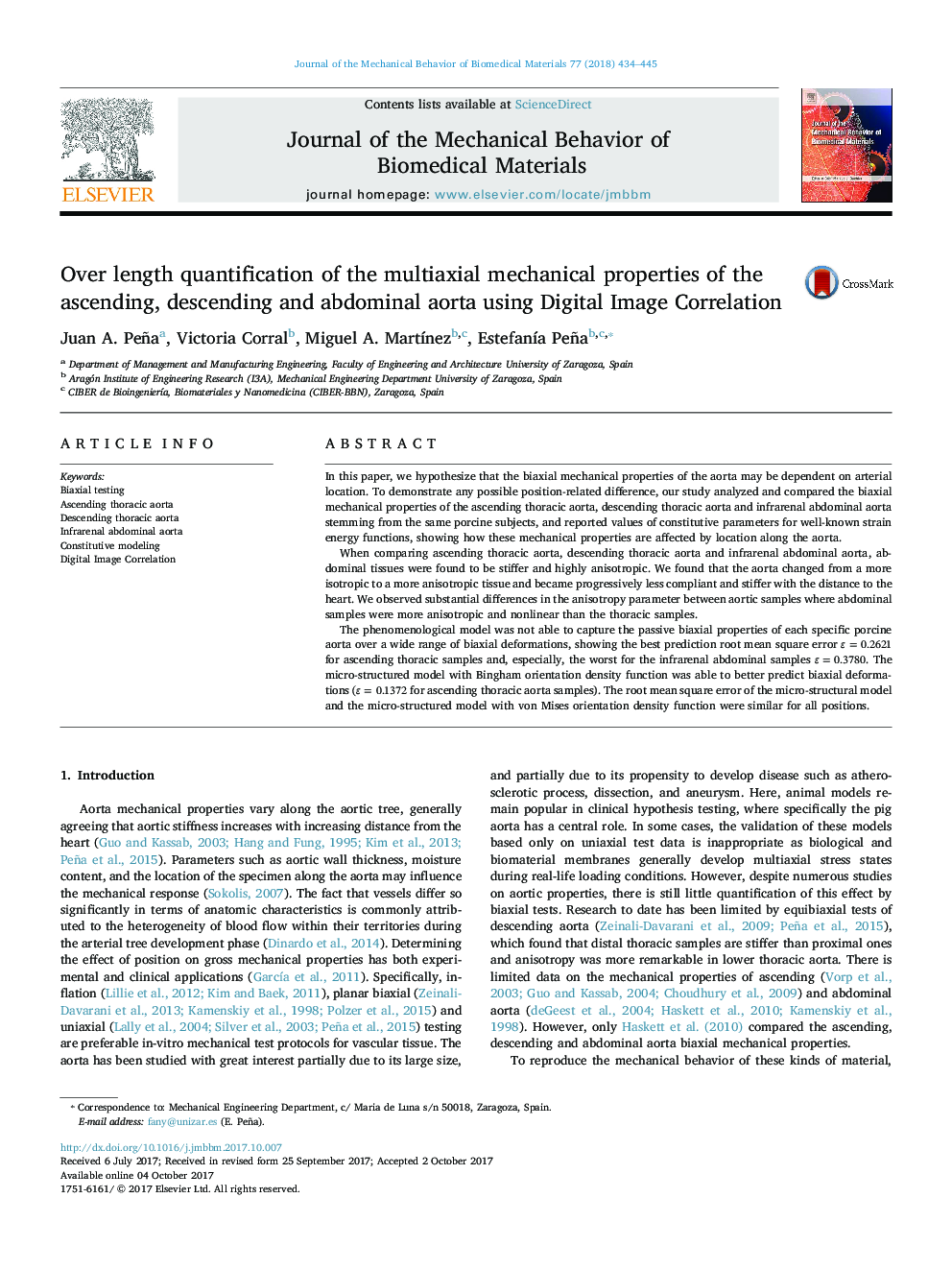| Article ID | Journal | Published Year | Pages | File Type |
|---|---|---|---|---|
| 5020374 | Journal of the Mechanical Behavior of Biomedical Materials | 2018 | 12 Pages |
In this paper, we hypothesize that the biaxial mechanical properties of the aorta may be dependent on arterial location. To demonstrate any possible position-related difference, our study analyzed and compared the biaxial mechanical properties of the ascending thoracic aorta, descending thoracic aorta and infrarenal abdominal aorta stemming from the same porcine subjects, and reported values of constitutive parameters for well-known strain energy functions, showing how these mechanical properties are affected by location along the aorta.When comparing ascending thoracic aorta, descending thoracic aorta and infrarenal abdominal aorta, abdominal tissues were found to be stiffer and highly anisotropic. We found that the aorta changed from a more isotropic to a more anisotropic tissue and became progressively less compliant and stiffer with the distance to the heart. We observed substantial differences in the anisotropy parameter between aortic samples where abdominal samples were more anisotropic and nonlinear than the thoracic samples.The phenomenological model was not able to capture the passive biaxial properties of each specific porcine aorta over a wide range of biaxial deformations, showing the best prediction root mean square error ε=0.2621 for ascending thoracic samples and, especially, the worst for the infrarenal abdominal samples ε=0.3780. The micro-structured model with Bingham orientation density function was able to better predict biaxial deformations (ε=0.1372 for ascending thoracic aorta samples). The root mean square error of the micro-structural model and the micro-structured model with von Mises orientation density function were similar for all positions.
